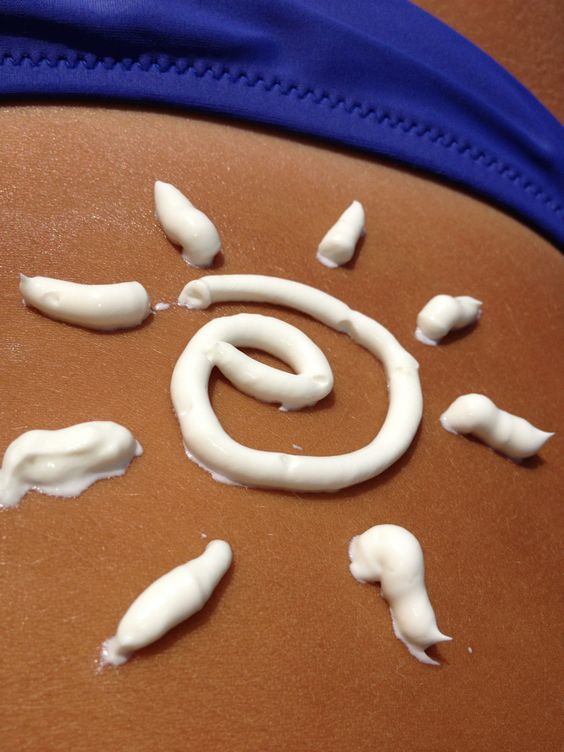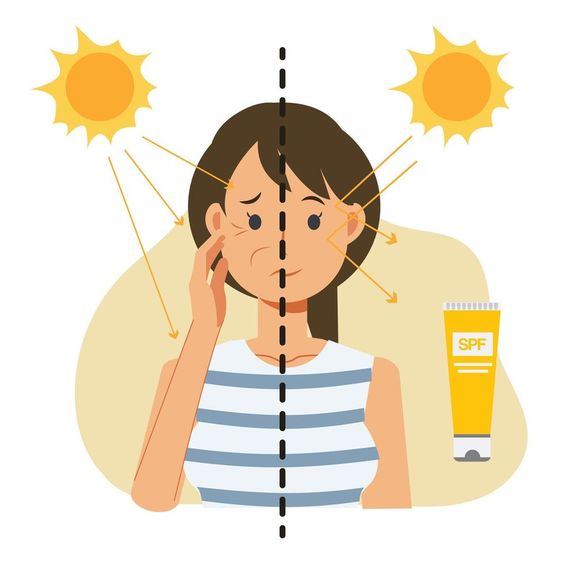
Sun protection is an important aspect of maintaining healthy skin and also prevents various skin-related issues caused by exposure to UV radiation by the sun. Sunlight is essential for the synthesis of vitamin D but overexposure to sun may cause sunburn and an increased rate of skin cancer. The sun protection factor (SPF) on a sunscreen label is a measure of how well the sunscreen protects against UV rays. As the SPF value increases, sunburn protection increases. In this blog, we look at the science behind sunburn and skin damage, how SPF works, different sunscreen types, and more so you can protect yourself from the harmful rays you’re exposed to daily.
Sun Protection
Sun protection is important for several reasons:
● Prevention of sunburn
● Reduced risk of skin cancer
● Prevention of premature aging
● Maintenance of skin damage
● Prevention of eye damage
● Prevents sun allergies etc.
Dangers Of UV Radiation:
UV radiation comes primarily from the sun. It comprises UVA, UVB, and UVC rays, each with unique properties. While some types of UV radiation provide health benefits, they can also pose risks. The sun continuously emits radiation. Ultraviolet (UV) radiation is one part of the electromagnetic spectrum of radiation that reaches Earth from the sun. It is a form of light energy situated on the spectrum just beyond visible light.
UV radiation has both beneficial and harmful effects. When someone exposes their skin to sunlight, it stimulates vitamin D production, which is necessary for healthy bones and muscles. However, UV radiation can also cause sunburn and skin ageing. In the long term, it is one of the leading causes of skin cancer.
What Is Sunscreen?

Sunscreen protects against sunburn and skin damage. It contains active ingredients that absorb UV radiation. No matter the day, weather, season, or environment, you should never go without applying sunscreen to your skin. Daily use of sunscreen is paramount, particularly if you want to keep your skin looking good and as healthy as possible for the long term. But without sunscreen and ample sun protection, the skin easily falls victim to burning, ageing, and even skin cancer-producing UV rays, compromising the skin’s integrity and appearance in more ways than one.
How Does Sunscreen Work?
Sunscreen works by combining organic and inorganic active ingredients that protect the skin against the sun’s rays. Sunscreen may come in a variety of forms, including sprays, liquids, lotions, powders, and creams.
There are two main types of sunblock available: physical sunscreen and chemical sunscreen. Understanding the way these sunscreens are made and the ingredients they contain can help you pick the one that’s best suited for your skin type.
Physical Sunscreen:
Physical sunscreen, also called “mineral” sunscreen, contains inorganic physical UV filters that reflect, scatter, and block the sun’s rays before they penetrate the skin. These active mineral ingredients, also known as physical blockers, are designed to sit on top of the epidermis rather than be absorbed into the skin.
Pros Of Physical Sunscreen:
● Physical sunscreen naturally offers broad-spectrum protection
● Less likely to irritate the skin
● Reflects heat, making physical sunscreens a great choice for those struggling with skin issues
● Most physical sunscreens are non-comedogenic, meaning they’re less likely to clog the pores
Cons Of Physical Sunscreen:
Physical sunscreen can be quick to rub off, and if you’re taking part in activities that involve perspiration or contact with water, you may need to reapply more frequently
● Some physical sunscreens leave a white-hued residue on the skin
● Physical sunscreens are often thicker and take more effort to rub in
Chemical Sunscreen:
Chemical sunscreens function differently; this type of sunblock contains organic (carbon-based) active ingredients designed to absorb UV radiation upon contact. Chemical sunscreens contain organic compounds that catalyze a chemical reaction when exposed to the sun; this reaction transforms UV rays into heat, which is then released from the skin. While physical UV filters block both UVA and UVB rays, chemical UV filters often only protect against one or the other.
Pros Of Chemical Sunscreen:
● Chemical sunscreen formulas tend to be thinner, making them easier to spread evenly across the skin
● Chemical sunscreens rub into the skin, leaving less residue
Cons Of Chemical Sunscreen:
● Chemical sunscreen must be applied at least 20 minutes before sun exposure, as it’s not effective immediately
● Chemical sunscreens contain chemical ingredients that can irritate the skin
● When worn in direct UV light, chemical sunscreen protection can be used up more quickly, meaning it requires more frequent application
● The protection it offers gets used up more quickly when in direct UV light, so reapplication must be more frequent
● Chemical sunscreens transform UV rays into heat and this heat can increase the likelihood of redness, especially for those struggling with rosacea and similar skin conditions
● Chemical sunscreens may be more likely to clog pores, which can make breakouts more frequent for those with oily skin
● The ingredients found in chemical sunscreens can irritate the eyes
Choosing The Right Sunscreen
Sun Protection Factor:
SPF measures the sunscreen’s ability to protect the skin from UV rays. The higher the SPF value, the more protected you are from the sun and its effect on the skin.SPF generally indicates the level of protection against UV rays, with a higher number signifying increased protection. For example, SPF 30 blocks 97% of UV rays, while SPF 50 blocks 98% indicating sunscreens with higher SPF protects skin more effectively.
Broad-Spectrum Protection:
Look for a sunscreen that provides broad-spectrum protection against both UVA and UVB rays.
Skin Type:
Consider your skin type before choosing a sunscreen. If you have sensitive skin, go for a physical sunscreen with zinc oxide or titanium dioxide. If you have oily skin, opt for a lightweight, non-greasy sunscreen.
Water-Resistant:
If you plan to swim or sweat, choose a water-resistant sunscreen that can withstand water exposure for a specific period.
Proper application techniques
When applying sunscreen, it’s essential to do so correctly to get the full effects.
How Much Sunscreens You Should Apply?
Apply enough sunscreen to cover all exposed flesh, including the ears, back of the neck, and tops of the feet, according to the American Academy of Dermatology. This amounts to about an ounce of sunscreen per application. It is critical to apply sunscreen liberally and evenly to guarantee adequate protection. If you’re using a spray sunscreen, apply it liberally and rub it in to ensure it is evenly spread.
Even if the sunblock is labelled “water-resistant,” reapply it every two hours or after swimming or sweating. In addition to sunscreen, if you’re going to be out in the sun for a prolonged period, it’s a good idea to wear protective clothing such as a hat and a long-sleeved shirt. You can help protect your skin from the harmful effects of UV rays and reduce your risk of skin cancer and premature ageing by following these recommendations and applying sunscreen generously and frequently.
When To Apply Sunscreen?
Sunscreen should be applied generously at least 15 minutes before sun exposure to allow it to absorb into the skin fully. Reapply sunscreen every two hours, or immediately after swimming, sweating, or towel drying. Even on cloudy days, UV rays can penetrate clouds and can cause damage, so sunscreen is a must no matter the weather.

Additional sun protection measures
Don’t rely on sunscreen only. Using sunscreen when you are going out in the sun is important. But it is only one part of an overall plan to protect your skin from harmful UV rays. Other important ways to protect your skin include:
● Seek shade when appropriate. Limit your sun exposure between 10 a.m. and 4 p.m., when UV rays are the strongest.
● Wear a hat with a wide brim and tightly woven clothing that covers most of your skin, as well as sunglasses.
● Don’t use tanning beds or sunlamps.
Last Reminder
Skincare is an important aspect of our general health and well-being. A sunscreen is a powerful tool that can protect us from the sun’s harmful rays, but it must be used properly. You can shield your skin and enjoy the great outdoors without fear of skin damage by following the guidelines and tips given in this ultimate guide to sun protection. Remember to use sunscreen regularly, seek shade during peak sun hours, and wear protective clothing whenever feasible. With a little work, you can protect your skin and keep it healthy, radiant, and youthful for years to come.